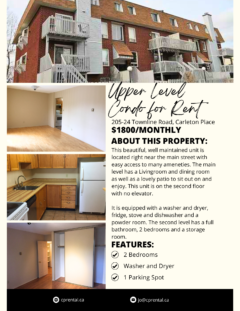Carbon monoxide alarms now required by law
As of April 15, if you have any fuel-burning appliances, a fireplace or an attached garage, you must have a carbon monoxide alarm in your home.
Homeowners and owners of residential buildings that have less than six suites must comply by Thursday April 15.
Owners of residential buildings with more than six suites will have until October.
Failure to comply could result in a fine up to $50,000 for people and $100,000 for corporations.
Where To Install A Carbon Monoxide Alarm
Since carbon monoxide moves freely in the air, the suggested location is in or as near as possible to sleeping areas of the home. The human body is most vulnerable to the effects of carbon monoxide during sleeping hours. To work properly the unit must not be blocked by furniture or draperies. Carbon Monoxide is virtually the same weight as air and therefore the alarm protects you in a high or low location.
For maximum protection, a carbon monoxide alarm should be located outside primary sleeping areas, in sleeping areas and in each level of your home.
Where NOT to Install a CO Alarm
Some locations may interfere with the proper operation of the alarm and may cause false alarms or trouble signals. CO alarms should not be installed in the following locations:
- Where the temperature may drop below 4.4o C (40oF) or exceed 37.8oC (100oF).
- Near paint thinner fumes or household cleaning products. Ensure proper ventilation when using these types of chemicals.
- Within 1.5m (5 feet) of any cooking or open flame appliances such as furnaces, stoves and fireplaces.
- In exhaust streams from gas engines, vents, flues or chimneys.
- Do not place in close proximity to an automobile exhaust pipe; this will damage the alarm.
Maintenance
Test your carbon monoxide alarm regularly to make sure it is operating properly. The owner’s manual should tell you how to test your alarm. Remember to check the manual for information on when to buy a new carbon monoxide alarm.






